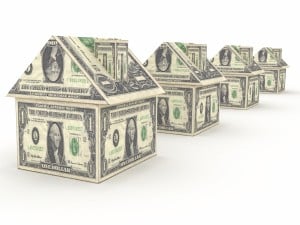Bureaucracy and tax breaks responsible for 53% increase in home prices
Taub Center says market fails to respond adequately to increases in demand and prices.
According to a Taub Center for Social Policy Studies report released earlier this week, the price of Israeli home prices increased 53 percent after inflation between 2007 and 2013. This jump was attributed to a growing demand caused by heavy bureaucracy, low interest rates and tax breaks.
Noam Gruber wrote the report’s chapter on the housing market, and observed that a sharp decrease in interest rates due to economic hardships on a global scale, combined with capital market taxation practices that created a comparative advantage for real estate investment, had led to a sharp rise in the demand for housing. He also said that rigid bureaucratic barriers were keeping the housing supply from increasing in a manner consistent with demand, which resulted in competition between investors and young households for the limited supply of new residences.
Israel has such heavy bureaucracy that the real estate market is less able to respond to in prices increases and demand than most other countries of the Western world. Thus, every 1% increase in home prices led to just a 0.38% increase in supply, the report said. That compared with an average of 0.65% for 21 developed economies covered in the report.
The report said that it took on average 13 years for a residential building to be completed in Israel- two of them on actual construction and the other 11 on planning and issuing licenses. Approvals from regional planning committees typically take five years and those from local committees another three years, the report said.
In spite of the sharp rise in home prices, the rate of home ownership remains high in Israel. The percentage of households that didn’t own a home dropped to 26.5 percent in 2012, the last year for which there are figures, from 27.7 percent six years earlier, the report said.
The number of households who own two or more homes increased almost four-fold to 8.1% from 2.1%, a rise that was especially prominent after 2006. The increase reflects the attractiveness of buying homes as an investment over the stock market and other investments, the report said.
But rental costs also rose between 2008 and 2011, hurting the youngest and elderly sectors of the population who are most likely to rent. The Taub Center estimated that their disposable income had dropped 5% in those years as they spent more and more on rent.
The report noted that if this trend within the young-household population continued, it could well have a long-term negative impact on Israeli homeownership rates, noting that an inordinate amount of residential real estate wealth was in the hands of the older generation.
The report also showed that the short-term solution is to make investing in residential real estate less attractive. Right now, only income in excess of NIS 5,080 ($1,300) a month is liable for taxation. But with the average rent in Israel being just 2,500 shekels, most landlords pay little or nothing on the approximately 640,000 rented units throughout the country.
The Taub Center recommended that rents be taxed at a rate of at least 25 percent, equivalent to the capital gains tax charged on securities investments.
For long-term solutions, the report recommended that planning and approval processes be simplified and decentralized and that the building infrastructure for new housing be given to local authorities. The sale of apartment buildings should be based on a supermajority of the tenants, rather than the National Outline Plan 38, known as Tama 38 in Hebrew.



